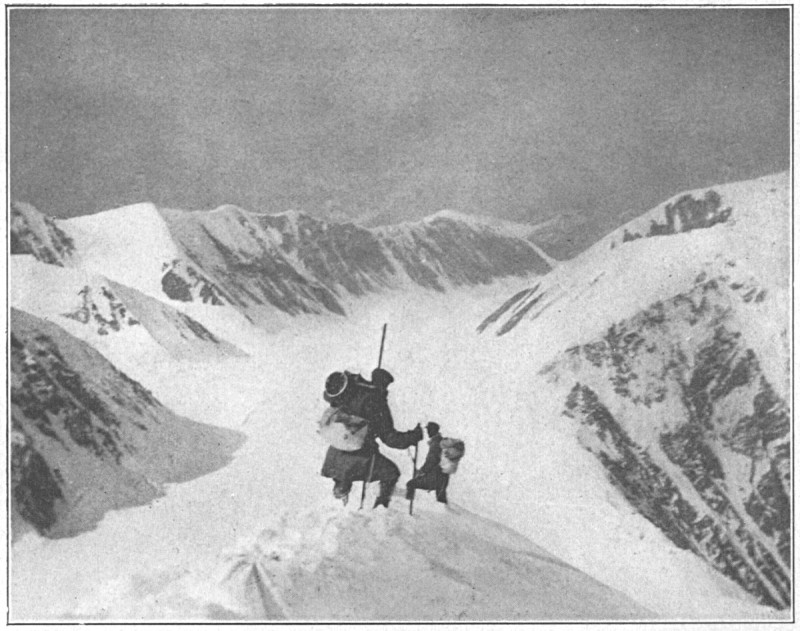In 1913 Hudson Stuck, Archdeacon of the Yukon and the Artic, organized a party for an attempt to be the first to reach the summit of Denali (Mount McKinley). The group reached the summit on June 7, 1913. Alaskan native Walter Harper was first to reach the summit.
The group consisted of Stuck, Harold Karstens, Walter Harper, Robert Tatum, John Fredson, and Esaias George.
Walter Harper Day commemorates first person to summit Denali
Alaska historian Mary Ehrlander stumbled on Harper’s story when researching Hudson Stuck, the English immigrant, cowboy and Episcopal archdeacon of the Yukon River. But it was Harper’s story, she thought, that needed telling.
“I thought, this is a spectacular story! We will need to know about him. Every school kid should learn about Walter Harper,” she said.
…
It took about three months to get from Fairbanks to the top. Fredson and George maintained the base camp for four weeks while the expedition team summited Denali. It was Stuck who thought that an Athabascan should be the first to step on to the taller, southern summit.
…
Harper was only 25 when he and his wife, Frances Wells, died on the steamer Princess Sophia when it ran aground in Lynn Canal on Oct. 25, 1918. The couple were on their way to the Lower 48 so Harper could attend medical school.
The son of an Irish immigrant father and Koyukon mother, Harper was raised Koyukon.
At the age of 16, Walter Harper started going to Tortella School, an Episcopal boarding school associated with St. Marks Mission in Nenana, Alaska. There he met Hudson Stuck, Episcopal archdeacon of the Yukon, who served a large area of the Interior as a missionary. Stuck was impressed by Harper’s intelligence, manners, and skills in fishing, tracking, trapping, fire-building, and dog handling. He hired him to work as his interpreter, guide, and dog driver. He also encouraged him to continue with his formal education.
In 1889 he enrolled to study theology at the University of the South in Sewanee, Tennessee. After completing his studies, Stuck became an Episcopal priest in 1892. He first served a congregation in Cuero, Texas for two years.
He was called to St. Matthew’s Cathedral in Dallas in 1894. Two years later, he became dean. He stressed progressive goals in his sermons and regularly published articles related to his causes. There he founded a night school for millworkers, a home for indigent women, and St. Matthew’s Children’s Home. In 1903 he gained passage in Texas of the first state law against child labor. He regularly preached and wrote against lynching….
In 1904 Stuck moved to Alaska to serve with Missionary Bishop Peter Trimble Rowe. Under the title Archdeacon of the Yukon and the Arctic, with a territory of 250,000 square miles, Stuck traveled between the scattered parishes and missions by dogsled and boat as well as foot and snowshoe.
…
Stuck wrote and published five books, memoirs of his times in Alaska, in part to reveal the exploitation of the Alaska Native peoples that he witnessed in his work. Two of Stuck’s books were edited by Maxwell Perkins, the legendary Scribner’s editor who also edited Ernest Hemingway, F. Scott Fitzgerald, and Thomas Wolfe.
Stuck and John Muir share a feast day on The Episcopal Church liturgical calendar.

